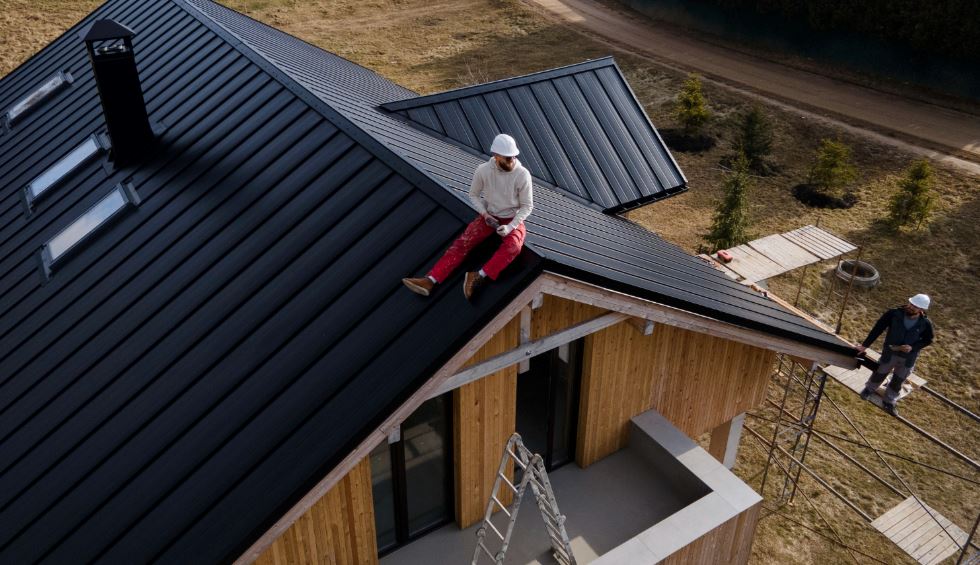Shingle roofing, as noted by Perrault Construction, stands as a stalwart guardian against the elements while adding a touch of elegance to any structure. In this article, we delve into the multifaceted world of shingle roofing, exploring its materials, benefits, maintenance essentials, and environmental considerations to get as noted by Perrault Construction.
- Introduction to Shingle Roofing
A. Definition and Purpose
Shingle roofing involves the application of overlapping layers of materials to protect buildings from weather conditions such as rain, snow, and hail. These shingles, typically made from asphalt, wood, metal, or slate, form a barrier against moisture infiltration, thereby safeguarding the interior of the structure.
B. Types of Shingle Materials
Shingle materials vary in composition and characteristics, offering homeowners a wide array of options to suit their preferences and budget. Asphalt shingles, the most common choice, provide durability and affordability. Wood shingles exude a natural charm and are renowned for their insulative properties. Metal shingles offer exceptional longevity and resistance to fire and pests. Meanwhile, slate shingles boast unparalleled elegance and resilience, albeit at a higher cost.
C. Importance of Proper Installation
While the quality of shingle materials is crucial, proper installation is equally vital to ensure optimal performance and longevity. Improperly installed shingles can lead to leaks, premature deterioration, and structural damage. Therefore, it’s imperative to entrust the installation process to experienced professionals who adhere to industry best practices.
II. Advantages of Shingle Roofing
A. Durability and Longevity
Shingle roofing systems are engineered to withstand the rigors of nature, enduring harsh weather conditions and temperature fluctuations with resilience. With regular maintenance and timely repairs, shingle roofs can last for decades, providing reliable protection and peace of mind to homeowners.
B. Versatility in Design
One of the standout features of shingle roofing is its versatility in design, allowing homeowners to customize their roofs to complement the architectural style of their homes. Whether opting for traditional asphalt shingles or premium slate tiles, there’s a myriad of colors, textures, and profiles to choose from, enabling homeowners to achieve their desired aesthetic vision.
C. Cost-effectiveness
In comparison to other roofing materials such as clay tiles or metal panels, shingle roofing offers a cost-effective solution without compromising on quality or performance. The relatively low upfront cost, coupled with minimal maintenance requirements, makes shingle roofs an attractive investment for budget-conscious homeowners seeking long-term value.
III. Maintenance Tips for Shingle Roofs
A. Regular Inspections
To prolong the lifespan of a shingle roof and prevent potential issues, regular inspections are paramount. Homeowners should conduct visual inspections of their roofs at least twice a year, checking for signs of damage, wear, or deterioration. Additionally, scheduling professional inspections by roofing experts can help identify underlying issues early on and address them promptly.
B. Cleaning and Debris Removal
Accumulated debris such as leaves, branches, and moss can compromise the integrity of shingle roofing by trapping moisture and promoting the growth of mold and algae. Therefore, it’s essential to regularly clean gutters, remove debris from the roof surface, and trim overhanging branches to prevent debris buildup and maintain proper drainage.
C. Repairing Damages Promptly
From cracked shingles to missing granules, even minor damages can escalate into major problems if left unaddressed. Promptly repairing damaged shingles, sealing leaks, and replacing worn-out flashing can help prevent water intrusion and extend the lifespan of the roof. Timely repairs not only preserve the structural integrity of the roof but also mitigate the risk of costly repairs down the line.
IV. Environmental Impact of Shingle Roofing
A. Sustainable Material Options
With growing awareness of environmental sustainability, manufacturers are increasingly offering eco-friendly shingle options made from recycled materials or renewable resources. These sustainable shingles not only reduce the carbon footprint but also contribute to resource conservation and waste reduction, aligning with homeowners’ eco-conscious preferences.
B. Energy Efficiency Considerations
Shingle roofing can play a significant role in enhancing the energy efficiency of homes by providing insulation and reducing heat transfer. Reflective shingles, in particular, help deflect solar radiation, thereby minimizing heat absorption and lowering cooling costs during hot summer months. By opting for energy-efficient shingle roofing systems, homeowners can reduce their reliance on artificial heating and cooling, resulting in lower utility bills and environmental impact.
C. Recycling and Disposal Methods
At the end of their lifespan, shingle roofs can be recycled rather than ending up in landfills, further reducing their environmental footprint. Many roofing contractors offer recycling programs to collect old shingles and repurpose them for various applications such as road construction or aggregate production. By participating in these recycling initiatives, homeowners can contribute to the circular economy and promote sustainable practices within the construction industry.
V. Conclusion: Choosing Shingle Roofing for Your Home
In conclusion, shingle roofing stands as a reliable and versatile roofing solution that combines durability, aesthetics, and affordability. By understanding the various types of shingle materials, embracing proper maintenance practices, and considering the environmental implications, homeowners can make informed decisions when selecting shingle roofing for their homes. With its myriad benefits and timeless appeal, shingle roofing continues to be a cornerstone of residential architecture, offering enduring protection and beauty for generations to come.

